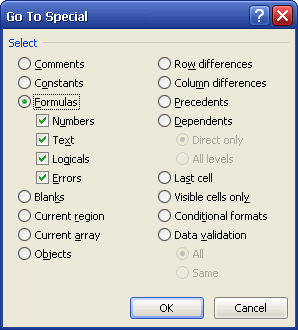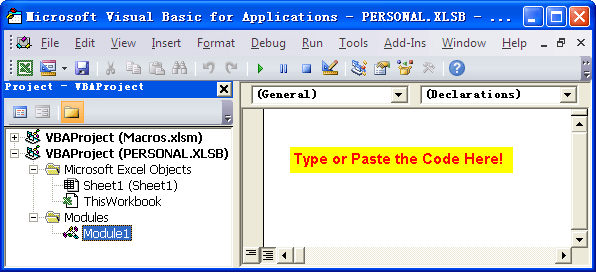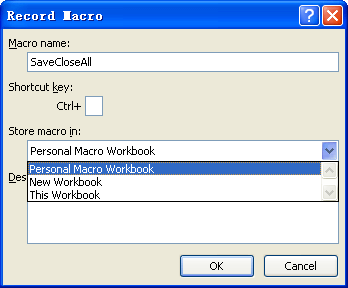This simple macro can help find and format all cells that contain formulas.
VBA Code
Sub FormatFormulas()
'Step 1: Declare your Variables
Dim ws As Worksheet
'Step 2: Avoid Error if no formulas are found
On Error Resume Next
'Step 3: Start looping through worksheets
For Each ws In ActiveWorkbook.Worksheets
'Step 4: Find cells and highlight them
With ws.Cells.SpecialCells(xlCellTypeFormulas)
.Interior.ColorIndex = 36
End With
'Step 5: Get next worksheet
Next ws
End SubHow This Macro Works
Excel has a set of predefined "special cells" that you can select by using the Go To Special dialog box. To select special cells manually, go to the Home tab on the Ribbon and select Go To Special. This brings up the Go To Special dialog box shown in Figure below. Here, you can select a set of cells based on a few defining attributes. One of those defining attributes is formulas. Selecting the Formulas option effectively selects all cells that contain formulas.

This macro programmatically does the same thing for the entire workbook at the same time. Here, we are using the SpecialCells method of the Cells collection. The SpecialCells method requires type parameter that represents the type of special cell. In this case, we are using xlCellTypeFormulas.
In short, we are referring to a special range that consists only of cells that contain formulas. We refer to this special range using the With…End With statement. This statement tells Excel that any action you perform applies only to the range to which you’ve pointed. Here, we are coloring the interior of the cells in the chosen range.
- Step 1 declares an object called ws. This creates a memory container for each worksheet the macro loops through.
- If the spreadsheet contains no formulas, Excel throws an error. To avoid the error, we tell Excel to continue with the macro if an error is triggered.
- Step 3 begins the looping, telling Excel to evaluate all worksheets in the active workbook.
- In this Step, the macro selects all cells containing formulas, and then formats them.
- In Step 5, we loop back to get the next sheet. After all of the sheets are evaluated, the macro ends.
How to Use This Macro
The best place to store this macro is in your Personal Macro Workbook. This way, the macro is always available to you. The Personal Macro Workbook is loaded whenever you start Excel. In the VBE Project window, it is named personal.xlsb.
- Activate the Visual Basic Editor by pressing ALT F11.
- Right-click personal.xlsb in the Project window.
- Choose Insert ➜ Module.
- Type or paste the code in the newly created module.

Don't see personal.xlsb in your project window?
If you don't see personal.xlsb in your project window, it doesn't exist yet. You'll have to record a macro, using Personal Macro Workbook as the destination.
To record the macro in your Personal Macro Workbook, select the Personal Macro Workbook option in the Record Macro dialog box before you start recording. This option is in the Store Macro In drop-down box.

Simply record a couple of cell clicks and then stop recording. You can discard the recorded macro and replace it with this one.